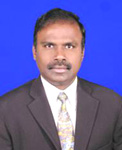

|
Mission Statement The prime purpose of Asia Oceania Geosciences Society (AOGS) is to promote geophysical science for the benefit of humanity in Asia and Oceania region. The Solar-Terrestrial Science Section of AOGS fully reserves the above theme and motivates its community to achieve it. Solar-Terrestrial (ST) Science combines the study of the outer solar atmosphere/corona, its extension via the solar wind into interplanetary space, and its impact on the ionised regions which form the Earth's magnetosphere and ionosphere. The ST research plays an important role in detailed investigations of local structures and physics, from solar prominences and flares through interplanetary discontinuities to micro-scale processes in the auroral regions, with an increased emphasis on many fundamental physical processes which effect the transfer of material and energy from one region to another. Such a global perspective encompasses a range of scales from the structure and evolution of a coronal mass ejection with significant variation over scales larger than a solar radius to the ionospheric footprint, measured in kilometres, of reconnection and dynamic processes affecting the Earth's magnetosphere over scales of several Earth radii. Further, the ST research can also include the solar interaction with other bodies possessing ionised atmospheres (e.g., comets and planetary magnetospheres) and provide useful comparative studies essential to the above mentioned physical processes. It is clear that no single instrument or facility can meet these research requirements. The key concern therefore is to set forth a new vision clearly and aggressively to enhance the awareness of cooperative research from the middle atmosphere, through the ionosphere, magnetosphere, and solar wind, to the Sun. We are required to involve in a long-range planning. For the future, the systematic plan of action of the ST Science section of AOGS is to encourage a co-ordinated, multi-disciplinary approach to reveal the chain of events from solar origin through to terrestrial response and manifestation of dynamic and fundamental processes. It is also essential to consider theory and computation as well as ground-based and space-based research that addresses the ST physical processes. It can be fostered by conducting special ST Science Section workshops/symposia under the umbrella of AOGS at different regions of Asia and Oceania, particularly regions in need of development of ST Science and/or bring people from such regions to nurturable countries. Finally, when considering the promotion of the ST Science collaborative research in the Asia-Oceania region, we must also take into account the important role of education of ST Science disciplines at all levels, as issues such as space weather become more important to the human society. We as an organization need to take large-scale efforts to reform the science education in the Asia-Oceania region to build a next generation of ST Science physicists.
|
Conference
News |

